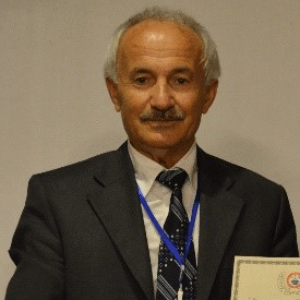Title : Crystallographic aspects of shape memory effect and reversibility in shape memory alloys
Abstract:
Some materials take place in class of advanced smart materials with adaptive properties and stimulus response to the external changes. Shape memory alloys take place in this group, with the capacity of responding to changes in the environment by exhibiting shape reversibility. These alloys exhibit a peculiar property called shape memory effect, which is characterized by the recoverability of two certain shapes of material at different conditions. These alloys have dual characteristics called thermoelasticity and superelasticity, from viewpoint of memory behavior. Shape memory effect is initiated on cooling and deformation processes and performed thermally on heating and cooling, with which shape of materials cycles between original and deformed shapes in reversible way in bulk level. Therefore, this behavior can be called thermal memory or thermoelasticity. Superelasticity is performed by stressing and releasing the material at a constant temperature in the parent phase region. Superelasticity exhibits ordinary elastic material behavior, but it is performed in non-linear way; loading and unloading paths are different at the stress-strain diagram, and hysteresis loop reveals energy dissipation. These phenomena are performed by crystallographic transformations called martensitic transformation. Thermoelasticity is governed by the thermal and stress induced martensitic transformations on cooling and stressing, and reverse austenitic transformation on heating. Superelasticity is governed by stress induced martensitic and reverse austenitic transformations by stressing and releasing materials, with which ordered parent phase structures turn into detwinned martensitic structure and ordered parent phase structures, respectively. These transformations occur with the movements of atoms in atomic scale in sub-nano level. Thermal induced martensite occurs on cooling along with lattice twinning and ordered parent phase structures turn into twinned martensite structures by means of lattice invariant shears, and these structures turn into detwinned martensitic structures with deformation by means of stress induced transformation. Lattice twinning occurs in two opposite directions, <110 > -type directions on the {110}-type plane of austenite matrix in self-accommodating manner, by means of lattice invariant shear. Superelasticity is also governed by stress induced martensitic transformation and ordered parent phase structures turn into detwinned martensite structures with stressing. Copper based alloys exhibit this property in metastable beta-phase region, which has bcc based structures at high temperature parent phase field. Lattice invariant shear is not uniform in shape memory alloys and cause to the formation of complex layered structures with thermal induced martensitic transformation. In the present contribution, electron diffraction and x-ray diffraction studies performed on two copper- based CuZnAl and CuAlMn alloys. Electron diffraction patterns and x-ray diffraction profiles exhibit super lattice reflections in martensitic condition. Specimens of these alloys were aged at room temperature in martensitic condition, and a series of x-ray diffractions were taken duration aging at room temperature. Reached results show that diffraction angles and peak intensities change with aging time at room temperature, and this result refers to the rearrangement of atoms in diffusive manner.
Keywords: Shape memory effect, martensitic transformation, thermoelasticity, superelasticity, lattice twinning, detwinning.
Audience Take Away Notes:
- Shape memory effect is a multidisciplinary subject, and I will introduce the basic terms and definition at the beginning of my Talk, and introduce the experimental results performed on two copper-based alloys


